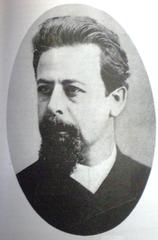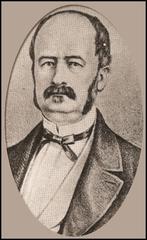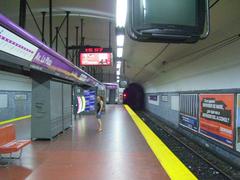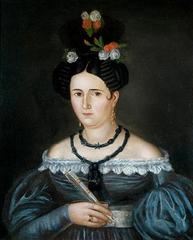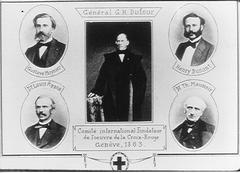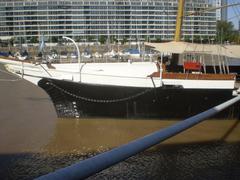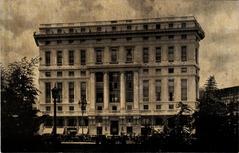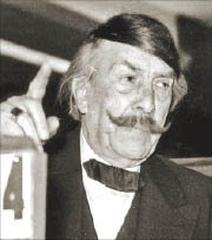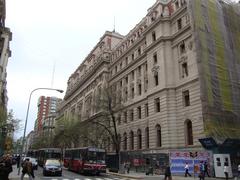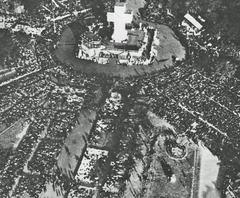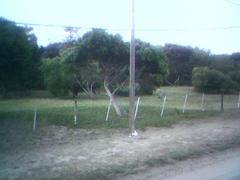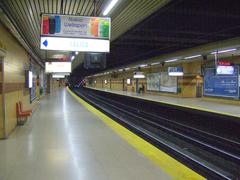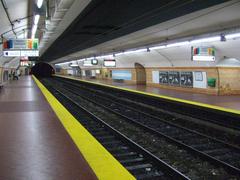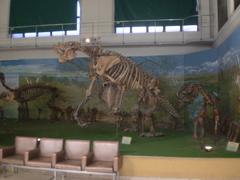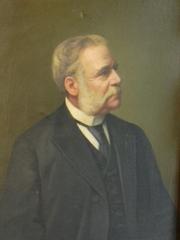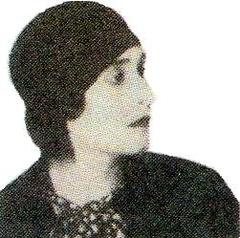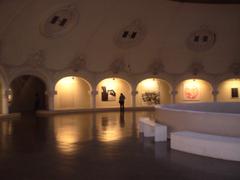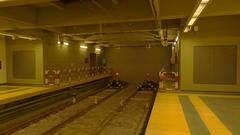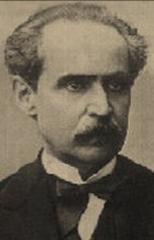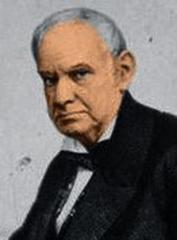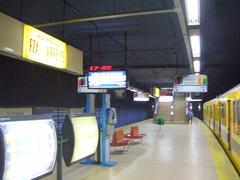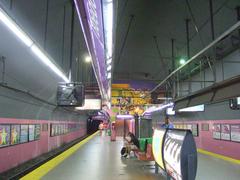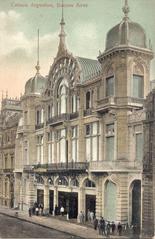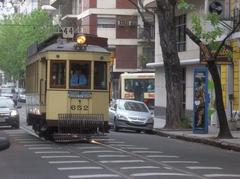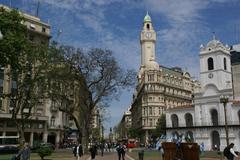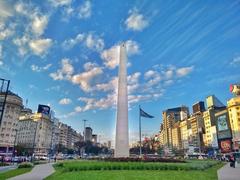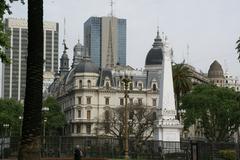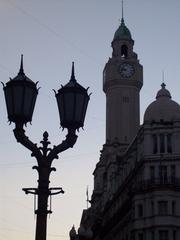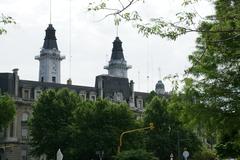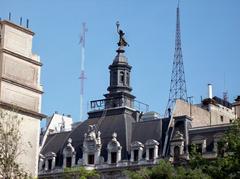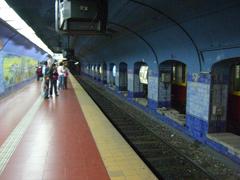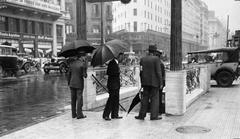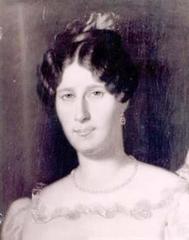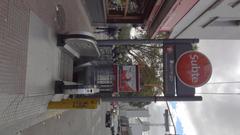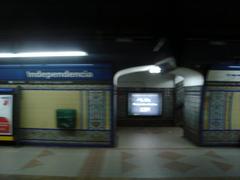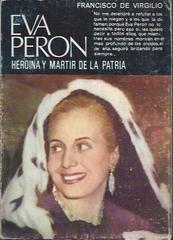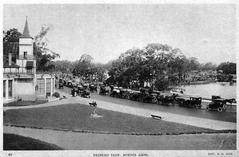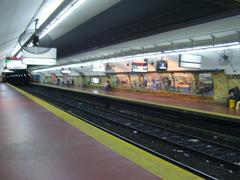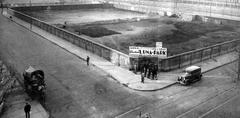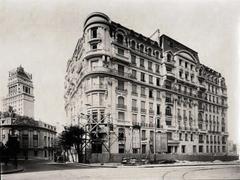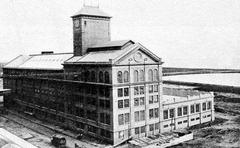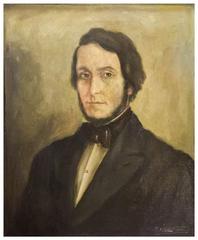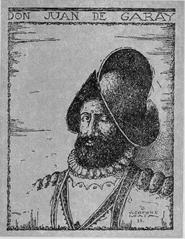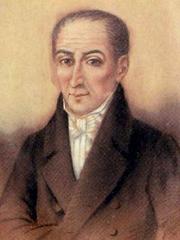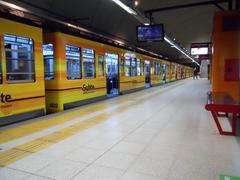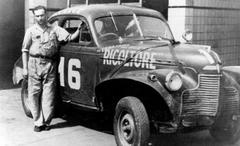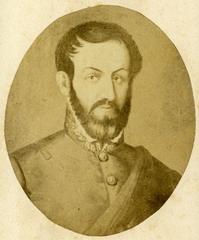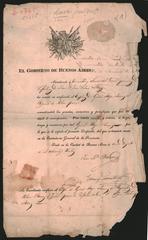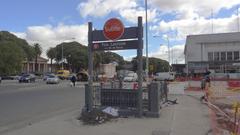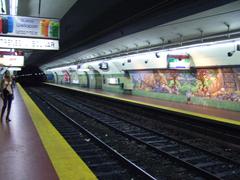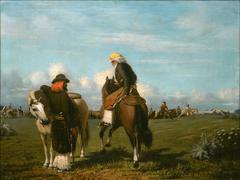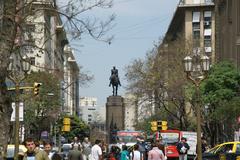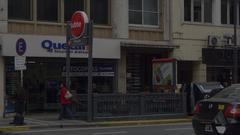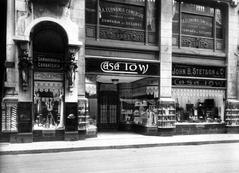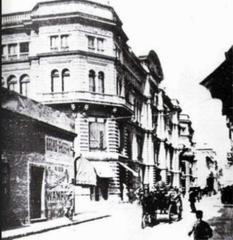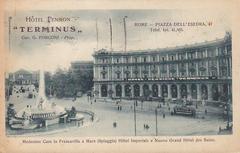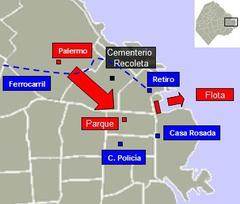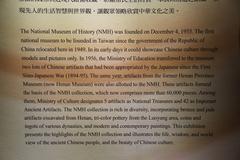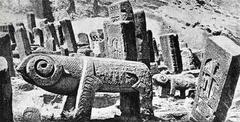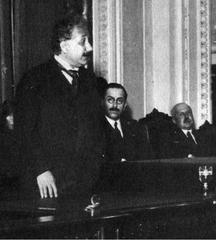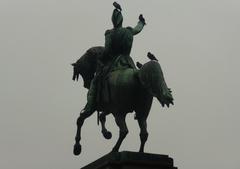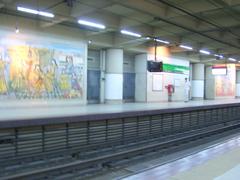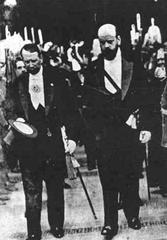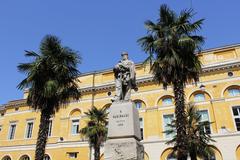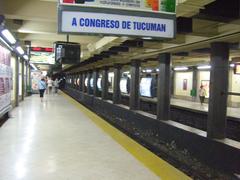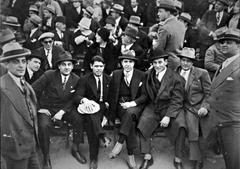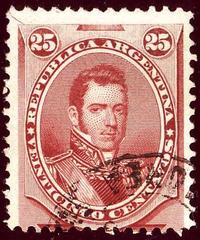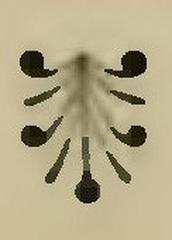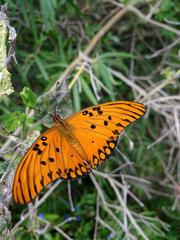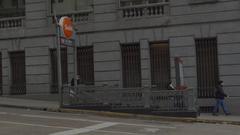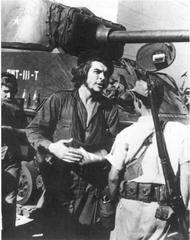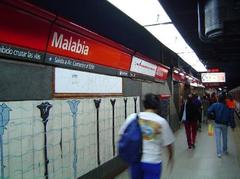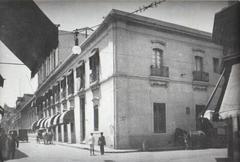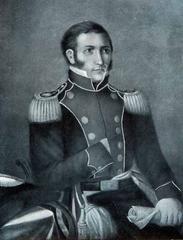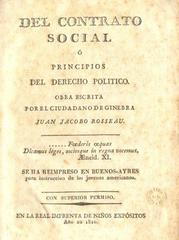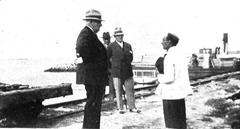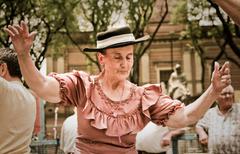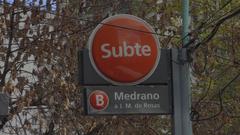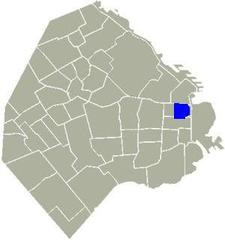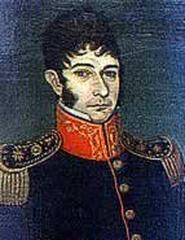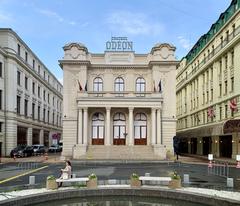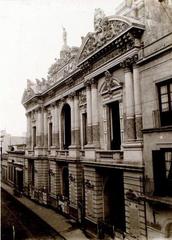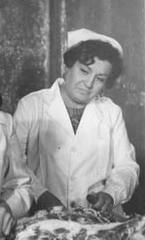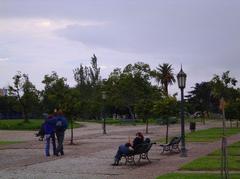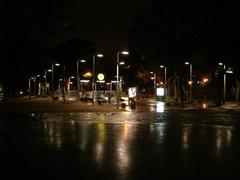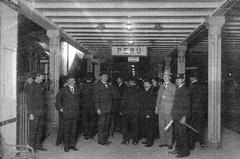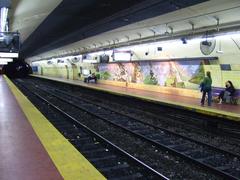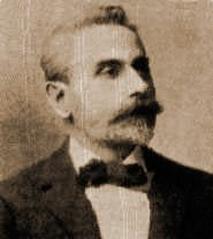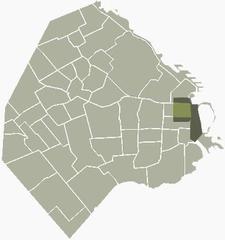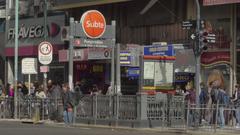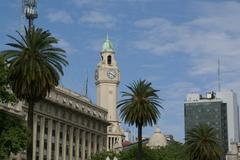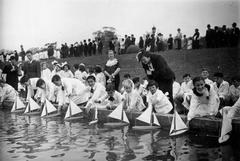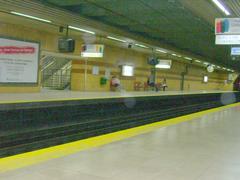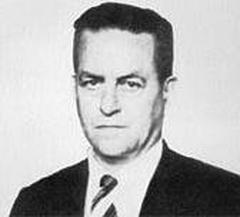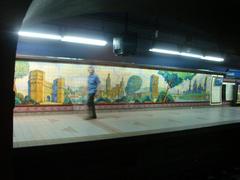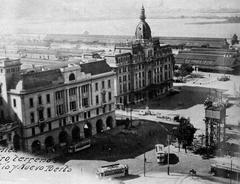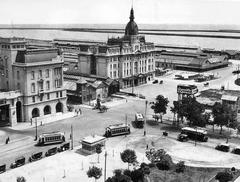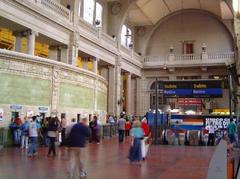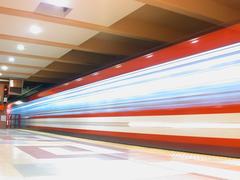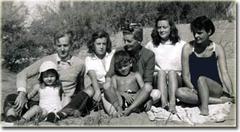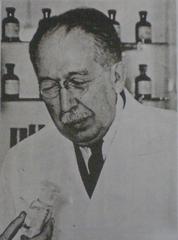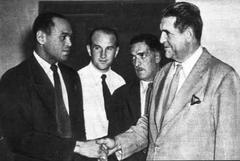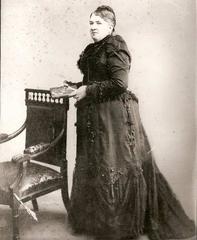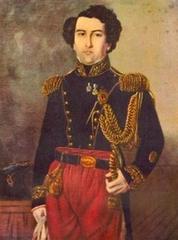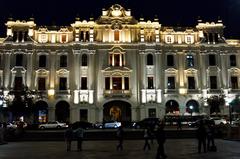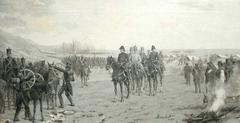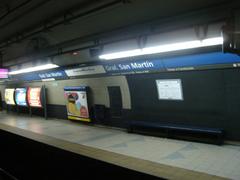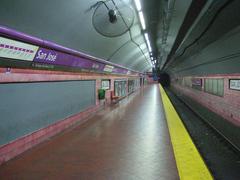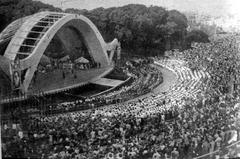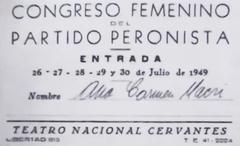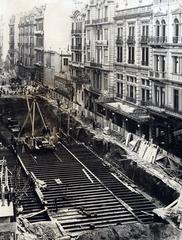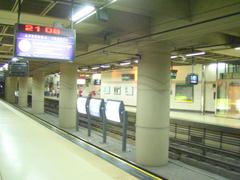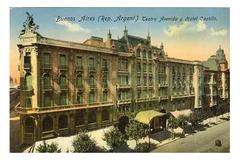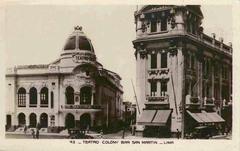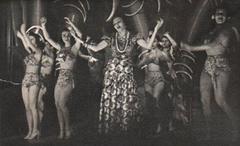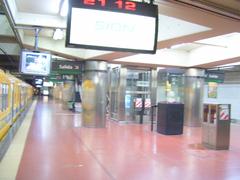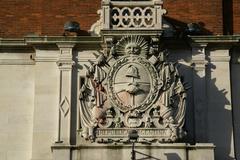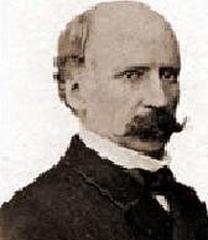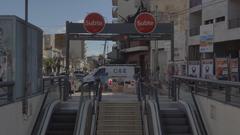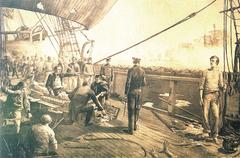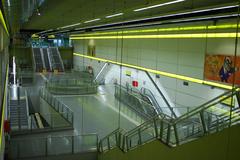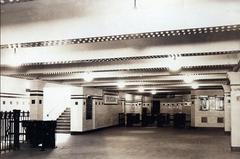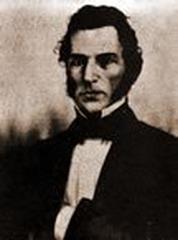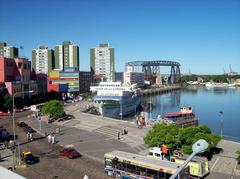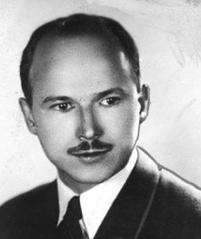
マルコス・パズ、ブエノスアイレス州、アルゼンチン:訪問時間、チケット、史跡に関する包括的ガイド
日付: 2025年6月15日
はじめに:マルコス・パズを発見する
ブエノスアイレスのすぐ西に位置するマルコス・パズは、豊かなアルゼンチンの歴史、文化的な伝統、そしてランチョスの穏やかな風景が融合したユニークな目的地です。1800年代後半に重要な鉄道の町として設立されたマルコス・パズは、副大統領マルコス・パズにちなんで名付けられ、その遺産は都市のアイデンティティと絡み合っています。「プエブロ・デル・アルボル」(木の町)というニックネームを獲得した緑豊かな公園、そして活気ある祭りや文化イベントのカレンダーを訪れる人々が体験できます。
ブエノスアイレスへの近さは、電車、バス、または車での便利なアクセスを確保しており、日帰り旅行や長期滞在に理想的です。プラサ25デマヨでの賑やかな市場を散策したり、サン・マルコス・エヴァンジェリスタ聖域教区で地元の歴史を掘り下げたり、または穏やかなラゴ・デ・マルコス・パズを楽しんだりするにせよ、このガイドは歴史的背景、主要なアトラクション、訪問時間、チケット、地域の習慣、交通機関などに関する重要な情報を提供します。
最新のアップデートや旅行アラートについては、公式自治体ウェブサイト、Maplandia、およびmarcospaznoticias.comを参照してください。
目次
歴史的概要
設立と発展
マルコス・パズは、アルゼンチンの鉄道システムの拡大に伴い19世紀後半に出現し、ランチョス地方の農業と人口の成長を促進しました(Maplandia、Mapcarta)。この町は、当時の国民的指導者を称える伝統を反映し、著名な政治家でバルトロメ・ミトレの下で副大統領を務めたマルコス・パズにちなんで名付けられました(Wikipedia)。
依然として顕著なランドマークである鉄道駅は、この都市が農地から活気あるコミュニティへと変貌する触媒となりました。ヨーロッパからの移民の到来は、この都市の性格をさらに形作り、多様な文化的影響を注入しました。
歴史上の人物とコミュニティの構築者
医師であり市長(1932〜1936年)であったエクトル・J・ダニャーニョ博士などの著名な人物が、医療および市民インフラの確立において重要な役割を果たしました(marcospaz.gov.ar)。ファン・フランシスコ・ハウレギやラモン・メルガルなどの教育者は、地元の教育システムの設立に貢献したことで記念されています。
文化的アイデンティティ
この都市の詩的なニックネーム「プエブロ・デル・アルボル」は、マリオ・J・グランによって広められ、マルコス・パズの木々が茂る通りと緑地へのコミットメントを祝っています。社会クラブ、職人グループ、そして旧ライオンズクラブを芸術センター「ラ・クエバ」に転換したことは、この都市の活発な文化的シーンを強調しています。
最近の発展
マルコス・パズは、特に最後の軍事独裁政権に関する社会記憶の保存に尽力しており、地元の経済と社会情勢を再構築している新しい刑務所複合施設のようなプロジェクトを通じて進化を続けています(Palermo Web)。
地理とアクセス
場所
マルコス・パズは、ブエノスアイレスの西48km、肥沃なランチョス平原に位置しています(座標:南緯34度46分54秒、西経58度50分45秒)(Maplandia)。大ブエノスアイレス都市圏の一部であり、電車(メルロ・ロボス線)、バス、または車で簡単にアクセスできます。
風景と気候
この地域は、開けた牧草地、木々が並ぶ大通り、そして田舎の牧場が特徴です。気候は温帯で、夏は暖かく(最高気温約30℃)、冬は穏やか(最低気温約6℃)です。快適な気候のために、春(9月~11月)または秋(3月~5月)に訪れるのが最適です(marcospaznoticias.com)。
人口
この都市と周囲のパルティド(行政区)には、約67,000人の住民がいます([citypopulation.de](https://www.citypopulation.de/en/argentina/admin/buenos_aires/06525__marcos_paz/))。
自然および古生物学的遺産
マストドンの化石を含む古生物学的発見により、マルコス・パズは「マストドンの地」というニックネームを獲得し、教育的な取り組みを刺激しています(marcospaznoticias.com)。
旅行者向け実用情報
- 言語: スペイン語が主流です。観光地では英語が話される場合もあります。
- エチケット: 温かい挨拶、カジュアルで清潔な服装、遅い食事時間が習慣です(Rough Guides)。
- 安全: マルコス・パズは安全です。標準的な注意が必要です。
- 医療: 地元の病院が医療サービスを提供しています。薬局も利用可能です(marcospaznoticias.com)。
- 持続可能な観光: 地元の職人を支援し、緑地を保護しましょう(marcospaz.gov.ar)。
主要アトラクションと訪問情報
歴史的史跡
- サン・マルコス・エヴァンジェリスタ聖域教区: 毎日午前8時~午後7時まで営業。入場無料。ガイド付きツアーあり(marcospaz.gov.ar)。
- 市営墓地歴史ツアー: 自己ガイド式。午前8時~午後6時、年間を通して。観光案内所で地図が入手可能。
- ヌエストラ・セニョーラ・デ・ラ・パズ教区教会: 午前9時~午後6時まで営業。入場料なし。
博物館と文化センター
- 市営博物館: 火~土、午前10時~午後5時。大人ARS 100、12歳未満は無料。
- セントロ・クルトゥラル・ラ・ビエハ・ウシーナ: 火~日、午前10時~午後8時。無料展示。特別イベントはチケット制。
公園と屋外スペース
- プラサ・サン・マルティン: 24時間営業。中心的な緑地と記念碑。
- マルコス・パズ市立公園: 毎日、午前7時~午後8時。無料、アクセス可能。
- ラゴ・デ・マルコス・パズ: 日の出から日没まで。無料。ウォーキングトレイルとバードウォッチング。
家族向けおよびコミュニティ向けスペース
- パルケ・デ・ロス・ニニョス: 午前8時~午後7時。無料、アクセス可能な遊び場とピクニックエリア。
エスタンシアと田舎への観光
- エスタンシア・ラ・エルビラ: 週末、午前9時~午後6時。ARS 500(アクティビティ込み)。乗馬とアサード(バーベキュー)が楽しめます。平日要予約。
宗教的および歴史的史跡
- イグレシア・サン・ミゲル・アルカンヘル: 午前9時~正午、午後5時~午後7時。無料、寄付歓迎。
地域生活、文化、イベント
- 祭り: 主要なイベントには、フィエスタ・ナショナル・デ・ラ・トラディシオン(8月)、カーニバル、独立記念日(7月9日)、5月革命(5月25日)があります(Mad-Traveller、BuenosAires.com)。
- 市場: プラサ25デマヨの職人市場では、工芸品、食品、テキスタイルが販売されています。
- 食文化: 地元のパリージャ、アサード、マテをお楽しみください。週刊市場では、地域のチーズ、肉、スイーツが並びます(kimkim.com)。
- 芸術: セントロ・クルトゥラル・ラ・ビエハ・ウシーナなどの会場では、アートワークショップ、演劇、音楽イベントが開催されます。
交通とアクセス
- 電車: メルロ・ロボス線がマルコス・パズをブエノスアイレス(オンセ駅)と結んでいます。所要時間は70〜90分です(Mapcarta)。
- バス: リネア136およびその他の地域バス。SUBEカードが必要です。所要時間は90〜120分です(nickipoststravelstuff.com)。
- 車: アクセソ・オエステ高速道路と州道6号線または40号線。
- 地域交通: タクシーは便利に利用できます。配車アプリは限られています。
- アクセス: 多くの公園と公共スペースは車椅子でアクセス可能ですが、一部の古い施設では介助が必要な場合があります。
よくある質問 (FAQ)
Q: 主要な歴史的史跡の訪問時間はどうなっていますか? A: サン・マルコス・エヴァンジェリスタ聖域教区:午前8時~午後7時;市営墓地:午前8時~午後6時;市営博物館:火~土、午前10時~午後5時。
Q: アトラクションにはチケットが必要ですか? A: ほとんどの史跡は無料ですが、市営博物館とエスタンシア・ラ・エルビラは少額の料金がかかります。
Q: ブエノスアイレスからマルコス・パズへはどうやって行けますか? A: 電車(メルロ・ロボス線)、バス(リネア136)、または車(アクセソ・オエステ経由)でアクセスできます。
Q: マルコス・パズは家族連れに適していますか? A: はい、公園、祭り、家族向けのイベントがあります。
Q: ガイド付きツアーはありますか? A: はい、歴史的史跡、エスタンシア、祭りの期間中に利用可能です。事前の予約をお勧めします。
Q: 訪問に最適な時期はいつですか? A: 春と秋は、祭り、穏やかな気候、活気ある景色を楽しめます。
訪問者へのおすすめ
- 祭りの時期は宿泊施設を早期に予約すること。
- 公共交通機関のためにSUBEカードを取得すること。
- 文化体験のために地域のイベントに合わせて計画を立てること。
- 地元の習慣を尊重し、マテやアサードの輪に参加して本物の体験をすること。
- 地元の職人や持続可能な観光イニシアチブを支援すること。
参考文献と外部リンク
- 公式マルコス・パズ市ウェブサイト
- Maplandia マルコス・パズ ガイド
- Mapcarta マルコス・パズ ガイド
- 市営墓地歴史ツアー
- マルコス・パズ・ノティシアス
- ウィキペディアのマルコス・パズ
- Overyourplace: ブエノスアイレスの文化
- SouthAmerica.travel: アルゼンチン概要
- BuenosAires.com: 季節のイベント
- Mad-Traveller: ブエノスアイレスの祭り
- Palermo Web: 新しい刑務所プロジェクト
- Nicki Post’s ブエノスアイレス交通ガイド
- Tourist Places Guide: マルコス・パズ
- KimKim: アルゼンチンで最高のローカルアクティビティ
ブエノスアイレスのすぐ外にあるマルコス・パズへの冒険を今すぐ計画して、アルゼンチンの遺産、おもてなし、そして発見を体験してください。パーソナライズされた旅行ガイドや最新情報については、Audialaアプリをダウンロードし、ソーシャルメディアでフォローしてください。
AudiAla2024### Historical Sites
- San Marcos Evangelista Sanctuary Parish: Open daily 8:00 AM–7:00 PM, free entry, guided tours available (marcospaz.gov.ar).
- Municipal Cemetery Historical Tour: Self-guided, 8:00 AM–6:00 PM, year-round, maps available at tourist center.
- Parish Church of Nuestra Señora de la Paz: Open 9:00 AM–6:00 PM, no entry fee.
Museums and Cultural Centers
- Municipal Museum: Tues–Sat, 10:00 AM–5:00 PM, ARS 100/adults, free for children under 12.
- Centro Cultural La Vieja Usina: Tues–Sun, 10:00 AM–8:00 PM, free exhibitions; ticketed special events.
Parks and Outdoor Spaces
- Plaza San Martín: Open 24 hours, central green space and monuments.
- Parque Municipal de Marcos Paz: Daily, 7:00 AM–8:00 PM, free, accessible.
- Lago de Marcos Paz: Sunrise to sunset, free, walking trails and birdwatching.
Family and Community Spaces
- Parque de los Niños: 8:00 AM–7:00 PM, free, accessible playgrounds and picnic areas.
Estancias and Rural Tourism
- Estancia La Elvira: Weekends 9:00 AM–6:00 PM, ARS 500 includes activities; horseback riding and asados. Weekdays by appointment.
Religious and Historical Sites
- Iglesia San Miguel Arcángel: 9:00 AM–12:00 PM and 5:00 PM–7:00 PM, free, donations welcome.
Local Life, Culture, and Events
- Festivals: Key events include the Fiesta Nacional de la Tradición (Aug), Carnaval, Independence Day (Jul 9), and the May Revolution (May 25) (Mad-Traveller, BuenosAires.com).
- Markets: Artisan markets at Plaza 25 de Mayo offer crafts, food, and textiles.
- Gastronomy: Enjoy local parrillas, asado, and mate. Weekly markets feature regional cheeses, meats, and sweets (kimkim.com).
- Arts: The city hosts art workshops, theater, and music events at venues such as Centro Cultural La Vieja Usina.
Transportation and Accessibility
- By Train: Merlo-Lobos line connects Marcos Paz to Buenos Aires (Once Station); journey is 70–90 minutes (Mapcarta).
- By Bus: Línea 136 and other regional buses, SUBE card required, 90–120 minutes (nickipoststravelstuff.com).
- By Car: Acceso Oeste highway and Provincial Routes 6 or 40.
- Local Transport: Taxis readily available, ride-sharing apps limited.
- Accessibility: Many parks and public spaces are wheelchair accessible, though some older sites may require assistance.
Frequently Asked Questions (FAQs)
Q: What are the visiting hours for key historical sites? A: San Marcos Evangelista Sanctuary Parish: 8:00 AM–7:00 PM; Municipal Cemetery: 8:00 AM–6:00 PM; Municipal Museum: Tues–Sat, 10:00 AM–5:00 PM.
Q: Are tickets required for attractions? A: Most sites are free; the Municipal Museum and Estancia La Elvira charge modest fees.
Q: How do I reach Marcos Paz from Buenos Aires? A: By train (Merlo-Lobos line), bus (Línea 136), or car via Acceso Oeste and Provincial Route 6.
Q: Is Marcos Paz family friendly? A: Yes, with parks, festivals, and family-oriented events.
Q: Are guided tours available? A: Yes, for historical sites, estancias, and during festivals; advance booking recommended.
Q: Best time to visit? A: Spring and autumn for festivals, mild weather, and vibrant scenery.
Visitor Recommendations
- Book accommodations early during festivals.
- Obtain a SUBE card for public transport.
- Plan around local events for cultural immersion.
- Respect local customs and participate in mate circles or asados for authentic experiences.
- Support local artisans and responsible tourism initiatives.
References and External Links
- Official Marcos Paz Municipal Website
- Maplandia Marcos Paz Guide
- Mapcarta Marcos Paz Guide
- Municipal Cemetery Historical Tour
- Marcos Paz Noticias
- Marcos Paz on Wikipedia
- Overyourplace: Buenos Aires Culture
- SouthAmerica.travel: Argentina Overview
- BuenosAires.com: Seasonal Events
- Mad-Traveller: Buenos Aires Festivals
- Palermo Web: New Penitentiary Project
- Nicki Post’s Buenos Aires Transport Guide
- Tourist Places Guide: Marcos Paz
- KimKim: Best Local Activities in Argentina
Marcos Paz offers an enriching travel experience that seamlessly combines historical significance, cultural vibrancy, and natural splendor. From its origins linked to the expansion of Argentina’s railway network and its homage to a national political figure, to its thriving local festivals and artistic expressions, the city presents visitors with a multifaceted glimpse into Argentine life beyond Buenos Aires. The preservation of historical landmarks like the San Marcos Evangelista Sanctuary Parish and engaging community events highlight a town proud of its heritage and committed to welcoming outsiders.
Accessibility and practical amenities ensure that travelers can navigate the city with ease, whether arriving by train, bus, or car, while a variety of accommodations caters to diverse preferences. The inviting green spaces, including the Parque Municipal and Lago de Marcos Paz, provide serene escapes, complemented by opportunities to engage with local traditions through markets, folkloric celebrations, and estancia visits.
Moreover, Marcos Paz’s recent developments, including culturally conscious urban projects and ongoing human rights remembrance, demonstrate a community evolving with respect and responsibility. Visitors are encouraged to partake in guided tours, support sustainable tourism initiatives, and embrace the warmth of local customs such as mate sharing and asados.
For those seeking a destination that offers historical depth, cultural authenticity, and convenient proximity to Buenos Aires, Marcos Paz stands out as an ideal choice. To maximize your visit, plan according to seasonal events—especially spring and autumn—and leverage resources like the municipal tourism office and travel platforms for updated schedules and guided experiences. Embrace the opportunity to explore this distinctive Argentine gem, and enrich your journey with the stories, flavors, and landscapes that define Marcos Paz. Stay connected and informed through travel apps like Audiala and local media to ensure a memorable and well-prepared adventure.
Explore more about Marcos Paz’s historical sites, festivals, and visitor tips through the comprehensive guides at marcospaznoticias.com and Tourist Places Guide.
AudiAla2024## Historical Overview of Marcos Paz
Founding and Early Development
Marcos Paz, located in the western sector of the Buenos Aires Province, Argentina, is a city and administrative partido (district) with a rich and layered history. The origins of Marcos Paz date back to the late 19th century, a period marked by the expansion of the railway network across Argentina. The city’s foundation is closely tied to the construction of the railway line connecting Buenos Aires with the interior, which catalyzed the development of numerous towns in the Pampas region (Maplandia).
The town was named after Marcos Paz, a prominent Argentine politician and vice president under Bartolomé Mitre, reflecting the era’s tradition of honoring national figures. The arrival of the railway station, which remains a central landmark, spurred population growth and economic activity, transforming the area from rural farmland into a burgeoning settlement (Mapcarta).
Key Historical Figures and Community Builders
Marcos Paz’s history is shaped by notable local figures who contributed to its civic and cultural development. Among them, Dr. Héctor J. D’Agnillo stands out as both a physician and mayor (1932–1936). He was instrumental in establishing the town’s first aid room in 1935, which later evolved into the hospital that now bears his name (marcospaz.gov.ar). Another significant figure is Dr. Emiliano ‘el Negro’ Rodríguez, who served as the first mayor after the return to democracy in 1983, guiding the city through a period of political transition.
The educational legacy of Marcos Paz is honored through monuments to its first teachers, such as Juan Francisco Jauregui (1870–1960) and Ramón Melgar (1872–1925), whose dedication laid the foundation for the town’s educational system (marcospaz.gov.ar).
Cultural Identity and Heritage
Marcos Paz is affectionately known as the “Pueblo del árbol” (Town of the Tree), a name immortalized by local poet Mario J. Grand (1920–2015). His poetry, inspired by his grandfather’s love for trees and the natural landscape, reflects the community’s deep connection to its environment and European immigrant roots, particularly from France (marcospaz.gov.ar).
The city’s cultural fabric is further enriched by the legacy of organizations such as the Lions Club, which, although no longer active locally, contributed to the social and artistic life of Marcos Paz. The former Lions Club building has been repurposed as the Center for the Arts “La Cueva,” serving as a hub for cultural activities (marcospaz.gov.ar).
Historical Landmarks and Visiting Hours
Several landmarks in Marcos Paz serve as tangible reminders of its history. The San Marcos Evangelista Sanctuary Parish, completed in 1937, features a clock donated by the Reilly family and imported from Great Britain—a symbol of the town’s international connections and the philanthropic spirit of its residents (marcospaz.gov.ar).
-
San Marcos Evangelista Sanctuary Parish: Open to visitors daily from 8:00 AM to 7:00 PM. Admission is free, but donations are welcome. Guided tours are available upon request through the municipal tourism office.
-
Municipal Cemetery Historical Tour: Offers a self-guided walking tour highlighting the resting places of influential citizens and providing insight into the town’s evolution. The tour is available year-round during daylight hours (8:00 AM – 6:00 PM). Visitors can obtain a map with historical information from the local tourist information center.
Recent History and Social Memory
Marcos Paz’s recent history is marked by both progress and challenges. The city has witnessed significant events, such as the return to democracy in the 1980s and the ongoing efforts to preserve the memory of those affected by Argentina’s last military dictatorship. Stories of local residents, such as Mirta De Souza Pinto’s account of her sister’s disappearance in 1977, are part of the collective memory and underscore the importance of human rights in the community (marcospaznoticias.com).
Geographic Context
Location and Accessibility
Marcos Paz is situated approximately 48 kilometers (30 miles) west of Buenos Aires city, within the fertile Pampas plains. Its geographic coordinates are 34°46′54″ South latitude and 58°50′45″ West longitude (Maplandia). The city is part of the Greater Buenos Aires metropolitan area, making it accessible by both road and rail. The Merlo-Lobos railway line connects Marcos Paz to Buenos Aires and neighboring towns, with the local train station serving as a key transportation hub (Mapcarta).
Physical Landscape and Environment
The region surrounding Marcos Paz is characterized by flat, open grasslands typical of the Pampas, one of the world’s most productive agricultural zones. The landscape is dotted with tree-lined avenues, small streams, and rural estancias (ranches), reflecting the area’s agricultural heritage. The city’s nickname, “Pueblo del árbol,” is a testament to its leafy streets and commitment to green spaces (marcospaz.gov.ar).
Climate
Marcos Paz experiences a temperate climate, with warm summers (average highs around 30°C/86°F) and mild winters (average lows around 6°C/43°F). Rainfall is distributed throughout the year, supporting the lush vegetation and agricultural activity. The best time to visit is during spring (September–November) and autumn (March–May), when temperatures are pleasant and the countryside is at its most vibrant (marcospaznoticias.com).
Population and Urban Structure
According to the 2022 census, Marcos Paz has a population of approximately 67,000 residents (citypopulation.de). The city’s urban layout is organized around the central plaza and railway station, with residential neighborhoods radiating outward. The surrounding partido encompasses both urban and rural zones, blending small-town charm with access to modern amenities.
Natural and Paleontological Significance
Marcos Paz has gained recognition for its paleontological discoveries, notably the unearthing of mastodon fossils, which have earned it the moniker “tierra de mastodontes” (land of mastodons) (marcospaznoticias.com). These findings highlight the region’s ancient natural history and have become a point of local pride, occasionally featured in educational and cultural events.
Practical Visitor Tips and Essential Information
Getting There and Around
- By Train: The Merlo-Lobos line provides regular service from Buenos Aires, with Marcos Paz station as a convenient arrival point (Mapcarta).
- By Car: Marcos Paz is accessible via the Acceso Oeste highway and provincial routes, with car rental options available in the area (Maplandia).
- By Bus: Regional bus lines connect Marcos Paz with Buenos Aires and neighboring towns.
Accommodation
A range of accommodation is available, from family-run guesthouses to small hotels. Booking in advance is recommended, especially during local festivals or holiday periods (Maplandia).
Local Customs and Etiquette
- Language: Spanish is the official language; basic English may be spoken in some establishments.
- Social Norms: Argentines are generally warm and expressive. Dress is casual but neat, and greetings are often accompanied by a kiss on the cheek (Rough Guides).
- Dining: Meal times are typically later than in North America or Europe, with lunch around 1–2 pm and dinner after 8 pm.
Safety and Health
- General Safety: Marcos Paz is considered safe, but standard precautions apply—avoid displaying valuables and be aware of your surroundings, especially at night (Rough Guides).
- Healthcare: The local hospital, named after Dr. Héctor J. D’Agnillo, provides medical services. Pharmacies operate on a rotating schedule, which can be checked locally (marcospaznoticias.com).
- Weather: Pack for variable weather, especially in spring and autumn.
Responsible Travel
- Respect Local Heritage: Participate in guided tours of historical sites and support local artisans.
- Environmental Awareness: Help maintain the city’s green spaces by disposing of waste properly and respecting public parks (marcospaz.gov.ar).
Notable Events and Activities
- Cultural Festivals: Marcos Paz hosts folklore music events, local fairs, and commemorations of historical milestones (marcospaznoticias.com).
- Historical Tours: The municipal cemetery offers a unique historical walking tour, highlighting the stories of the town’s founders and notable residents (marcospaz.gov.ar).
- Nature Walks: Enjoy the tree-lined avenues and rural landscapes that inspired the city’s poetic nickname.
Frequently Asked Questions (FAQs)
Q: What are the visiting hours for Marcos Paz’s main historical sites? A: The San Marcos Evangelista Sanctuary Parish is open daily from 8:00 AM to 7:00 PM with free admission. The municipal cemetery historical walking tour is available during daylight hours, from 8:00 AM to 6:00 PM.
Q: Are there entrance fees or tickets required for visiting landmarks in Marcos Paz? A: Most historical sites, including the Sanctuary Parish and the cemetery tour, have free admission. Donations are appreciated at the Sanctuary.
Q: How can I get to Marcos Paz from Buenos Aires? A: Marcos Paz is accessible by the Merlo-Lobos train line from Buenos Aires, regional buses, or by car via the Acceso Oeste highway.
Q: Are guided tours available in Marcos Paz? A: Guided tours can be arranged for the Sanctuary Parish and other historical sites through the municipal tourism office.
Q: What is the best time of year to visit Marcos Paz? A: Spring (September–November) and autumn (March–May) offer pleasant temperatures and vibrant landscapes.
Visuals and Media
High-quality images of Marcos Paz’s historical landmarks, such as the San Marcos Evangelista Sanctuary Parish and the municipal cemetery, should be included with alt tags like “Marcos Paz historical landmark” to enhance engagement and SEO.
Interactive maps and virtual tours (if available) can further enrich the visitor experience.
Essential Contacts
- Tourist Information: Visit the municipal website for the latest updates on attractions, visiting hours, and events.
- Emergency Services: Dial 911 for police, fire, or medical emergencies.
Marcos Paz offers a blend of historical depth, natural beauty, and small-town hospitality, making it a rewarding destination for travelers seeking an authentic Argentine experience within easy reach of Buenos Aires. Plan your visit today, check the latest visiting hours and ticket information, and explore the rich heritage of this unique city.
For more travel tips and updates on Marcos Paz and other Buenos Aires historical sites, follow us on social media and download the Audiala app for personalized travel guides.
AudiAla2024## Historical and Cultural Foundations of Marcos Paz
Marcos Paz, located in the western part of Greater Buenos Aires, draws its name and much of its local identity from a significant figure in Argentine history: Marcos Paz (1813–1868), who served as Vice President of Argentina and was instrumental in the country’s mid-19th-century political consolidation (Wikipedia). The town and its surrounding partido (administrative division) were named in his honor, reflecting a tradition in Argentina of commemorating national leaders through place names. This historical connection is a point of local pride and is often referenced in civic events and educational curricula.
The area’s development was closely tied to the expansion of the railway in the late 19th and early 20th centuries, which facilitated agricultural growth and migration. The resulting blend of rural traditions and proximity to Buenos Aires city has shaped a unique local culture that balances small-town values with metropolitan influences.
Community Identity and Social Fabric
Marcos Paz’s local identity is deeply rooted in its agricultural heritage. The town’s social calendar is punctuated by traditional fairs, livestock exhibitions, and rural festivals that celebrate the region’s farming roots. These events often feature folkloric music, regional cuisine, and artisan crafts, providing visitors with an authentic glimpse into the rhythms of rural Argentine life.
The community is known for its strong sense of solidarity and civic engagement. Local organizations, including sports clubs, volunteer fire brigades, and cultural associations, play a central role in daily life. These institutions foster intergenerational ties and help preserve customs such as mate-sharing, communal barbecues (asados), and the celebration of national holidays with parades and public gatherings (Overyourplace).
Influence of Buenos Aires’ Urban Culture
While Marcos Paz maintains a distinct rural character, its proximity to Buenos Aires city has brought significant urban influences. Many residents commute to the capital for work or study, and the town’s cultural offerings reflect this connection. Tango, Argentina’s iconic dance and music genre, is celebrated in local milongas (dance halls) and community centers, echoing the vibrant tango scene of Buenos Aires (SouthAmerica.travel).
The town also participates in broader metropolitan cultural events, such as the Buenos Aires Tango Festival and regional folklore competitions. These occasions provide opportunities for local artists and performers to showcase their talents and for residents to engage with the wider cultural currents of the province (BuenosAires.com).
Festivals, Traditions, and Public Life
Marcos Paz’s annual calendar is rich with festivals that reflect both national and local traditions. Key events include:
- Fiesta Nacional de la Tradición: Celebrated in August, this festival honors Argentine rural heritage with parades of gauchos (Argentine cowboys), horse shows, and performances of traditional music and dance (Mad-Traveller).
- Carnaval: Like much of Argentina, Marcos Paz observes Carnival with colorful parades, music, and communal festivities, often centered around the town square.
- Patriotic Holidays: Independence Day (July 9) and the May Revolution (May 25) are marked by civic ceremonies, flag-raising, and public concerts, reinforcing a shared sense of national identity (BuenosAires.com).
Local sports, particularly football, are another cornerstone of community life. Matches involving local teams draw enthusiastic crowds, and the town’s sports clubs serve as important social hubs.
Visitor Information: How to Explore Marcos Paz
- Getting There: Marcos Paz is accessible by road from Buenos Aires city, approximately a 60 km drive west via National Route 3. Public buses connect the town with Retiro and other Buenos Aires terminals, with frequent departures throughout the day.
- Visiting Hours and Accessibility: Most public spaces, including the town center and main plazas, are open daily. Local museums and cultural centers typically operate from 10:00 AM to 6:00 PM, Tuesday through Saturday. Accessibility for visitors with reduced mobility is improving, with ramps and assistance available at key sites.
- Guided Tours: Several local tour operators offer guided visits to Marcos Paz’s historic sites, rural estancias, and cultural festivals. Booking in advance is recommended, especially during festival seasons. Tours often include horseback riding, traditional meals, and visits to artisan workshops.
- Photography Spots: The town square, historic railway station, and surrounding estancias provide excellent opportunities for photography, especially during festivals and at sunset.
- Tickets and Entry Fees: Most public events and festivals are free to attend. Entry fees may apply for museums, guided tours, and special exhibitions, generally ranging from USD 5 to 15.
Contemporary Developments and Civic Transformation
In recent years, Marcos Paz has gained national attention due to the construction of a major new penitentiary complex. This project, initiated by the Buenos Aires city government, aims to address the chronic overcrowding of the metropolitan penal system and is expected to have a significant impact on the town’s social and economic landscape (Palermo Web).
The new facility, with a capacity for 2,240 inmates, is designed not only as a correctional institution but also as a catalyst for local development. The influx of new jobs and investment is anticipated to stimulate the local economy, while the project’s emphasis on rehabilitation and humane conditions reflects evolving attitudes toward criminal justice in Argentina. The community’s response has been mixed, with some residents expressing optimism about economic opportunities and others voicing concerns about changes to the town’s character.
Gastronomy and Everyday Customs
Marcos Paz’s culinary scene is a reflection of its rural roots and the broader gastronomic traditions of Buenos Aires province. Local eateries and markets offer classic Argentine dishes such as empanadas, choripán (grilled sausage sandwiches), and asado, often prepared with beef sourced from nearby estancias (ranches). The ritual of sharing mate, a traditional herbal infusion, is ubiquitous and serves as a symbol of hospitality and friendship.
Weekly markets and fairs provide opportunities to sample regional cheeses, cured meats, and homemade sweets, while also supporting local producers and artisans. These gatherings are social events as much as commercial ones, reinforcing the town’s communal ethos.
Artistic Expression and Cultural Spaces
Marcos Paz supports a modest but vibrant arts scene. Community theaters, music schools, and art workshops offer residents and visitors alike opportunities to engage with visual and performing arts. Murals and public art installations, often created by local artists, depict scenes from the town’s history and daily life, contributing to a sense of place and shared memory.
Literary culture is also valued, with public libraries and book fairs promoting reading and education. The influence of renowned Argentine writers, such as Jorge Luis Borges and Julio Cortázar, is evident in local literary events and school curricula (SouthAmerica.travel).
Religious and Spiritual Life
The majority of Marcos Paz’s residents identify as Roman Catholic, and the town’s churches are important centers of spiritual and social activity. Religious festivals, such as Easter and Christmas, are celebrated with processions, masses, and community meals. Other faiths are present as well, reflecting Argentina’s growing religious diversity.
Practical Tips for Visitors Seeking Cultural Immersion
- Attend a Local Festival: Time your visit to coincide with a major festival or fair for an immersive experience of local traditions.
- Explore the Town Center: The main square and surrounding streets are the heart of public life, especially on weekends and holidays.
- Visit a Rural Estancia: Many nearby ranches offer tours, horseback riding, and traditional meals, providing insight into the region’s agricultural heritage.
- Engage with Locals: Argentines are known for their warmth and hospitality. Don’t hesitate to join a mate circle or strike up a conversation at a café.
- Respect Local Customs: Dress modestly for religious events, and be mindful of local etiquette, such as greeting with a kiss on the cheek.
Frequently Asked Questions (FAQ)
Q: What is the best time of year to visit Marcos Paz? A: The town is lively year-round, but visiting during the Fiesta Nacional de la Tradición in August or Carnaval season offers unique cultural experiences.
Q: Are there guided tours available in Marcos Paz? A: Yes, local operators provide guided tours focusing on history, rural life, and cultural events. Booking ahead is recommended.
Q: How do I get to Marcos Paz from Buenos Aires city? A: Marcos Paz can be reached by bus from Retiro station or by car via National Route 3, about a 60-minute drive.
Q: Is Marcos Paz suitable for family visits? A: Absolutely. The town offers family-friendly festivals, parks, and cultural activities.
Q: Are there accommodations in Marcos Paz? A: There are several small hotels and guesthouses in town, with larger options available in nearby Buenos Aires.
Call to Action
Plan your trip to Marcos Paz today to experience a captivating blend of Argentine history, rural traditions, and metropolitan culture. For more detailed travel guides, exclusive tours, and the latest updates on festivals and events, subscribe to our newsletter and follow us on social media. Discover Marcos Paz — Buenos Aires’ cultural gem waiting to be explored!
Related Articles:
Note: Images and maps illustrating Marcos Paz’s key sites and events are recommended to be included with this article, with keyword-rich alt text such as “Marcos Paz town square festival,” “Fiesta Nacional de la Tradición parade,” and “Marcos Paz rural estancia landscape.”
AudiAla2024## Welcome to Marcos Paz: A Charming Historical City Near Buenos Aires
Nestled just 48 kilometers west of Buenos Aires, Marcos Paz offers visitors a blend of rich history, cultural heritage, and natural beauty. Known for its tree-lined streets, colonial architecture, and vibrant local events, this city is an ideal destination for travelers seeking an authentic Argentine experience beyond the capital. Whether you’re exploring its historical sites, attending special festivals, or simply enjoying the tranquil surroundings, Marcos Paz promises a memorable visit.
History and Cultural Significance
Founded in the late 19th century, Marcos Paz has played an important role in the agricultural development of the Buenos Aires province. The city’s name honors Dr. Marcos Paz, a prominent Argentine politician. Visitors can explore landmarks such as the historic Parish Church of Nuestra Señora de la Paz, which dates back to the early 1900s, and the Municipal Museum that showcases local heritage through artifacts and photographs. Throughout the year, cultural events like the Annual Folklore Festival celebrate traditional music, dance, and crafts.
Top Attractions and Visiting Information
Historical Sites
- Parish Church of Nuestra Señora de la Paz: Open daily from 9:00 AM to 6:00 PM. No entrance fee. Ideal for photography and reflection.
- Municipal Museum of Marcos Paz: Open Tuesday to Saturday, 10:00 AM – 5:00 PM. Tickets cost ARS 100 for adults; free for children under 12.
Parks and Outdoor Spaces
- Plaza San Martín: The central square features green spaces, monuments, and is a popular gathering spot.
- Lago de Marcos Paz: A scenic lake offering walking trails and picnic areas.
Guided Tours and Events
Visitors can join guided walking tours that cover historical sites and local artisan markets. Special events such as the Folklore Festival (held every November) attract national performers and artisans.
Transportation and Accessibility
Road Access and Highways
Marcos Paz is accessible via several major roadways from Buenos Aires. The most direct route is via the Autopista 25 de Mayo (AU1) connecting to Avenida General Paz and Acceso Oeste, followed by Provincial Route 6 (RP 6). An alternative scenic route involves Provincial Route 40 (RP 40) from Merlo, passing through rural landscapes. Road conditions are generally good, but travelers should check traffic updates during peak hours.
Public Bus Services
The Línea 136 bus connects Marcos Paz with Buenos Aires and neighboring cities such as Merlo and Morón. Buses operate regularly and accept the SUBE card. The journey takes approximately 90–120 minutes depending on traffic.
Train Connections
Marcos Paz is served by the Línea Sarmiento and Línea Belgrano Sur trains, both of which accept the SUBE card. The Sarmiento Line runs between Buenos Aires (Once Station) and Marcos Paz in about 70–90 minutes. The Belgrano Sur Line resumed service in 2021, offering additional connectivity.
Local Transport
Within the city, taxis and local buses provide convenient travel options. Ride-sharing apps may have limited availability, so it’s advisable to plan accordingly.
Accessibility for Travelers with Disabilities
Many public transport stations and buses have improved accessibility features such as ramps and low floors. However, some older infrastructure may still present challenges. Travelers are encouraged to contact providers in advance.
Tickets, Payment, and Visitor Tips
- Tickets: Entry fees apply only to select attractions like the Municipal Museum. Most historical sites and public spaces are free.
- Payment: The SUBE card is essential for public transport; it can be purchased and recharged at kiosks and stations.
- Visiting Hours: Most attractions are open during daytime hours, typically between 9:00 AM and 6:00 PM.
Recommended Photographic Spots
- Plaza San Martín with its central monument
- The façade of the Parish Church of Nuestra Señora de la Paz
- Scenic views around Lago de Marcos Paz
- Streets featuring colonial architecture and local markets
Frequently Asked Questions (FAQ)
Q: What is the best time to visit Marcos Paz? A: Spring (September to November) and fall (March to May) offer mild weather and vibrant cultural events.
Q: Are there guided tours available? A: Yes, local guides offer walking tours focusing on history and artisan markets. Booking in advance is recommended.
Q: How do I purchase tickets for attractions? A: Tickets for places like the Municipal Museum can be bought on-site. Public transport requires a SUBE card.
Q: Is Marcos Paz safe for tourists? A: Yes, the city enjoys a small-town atmosphere with low crime. Standard precautions are advised.
Q: Can I use ride-sharing apps in Marcos Paz? A: Availability is limited; local taxis are more reliable.
Conclusion
Marcos Paz is a hidden gem near Buenos Aires, offering a rich tapestry of history, culture, and natural charm. With convenient transportation options, welcoming locals, and a variety of attractions, it is an ideal destination for day trips or longer stays. Plan your visit by checking opening hours, securing your SUBE card for transport, and exploring the city’s unique sites and events.
For more detailed schedules and updates, visit the official Marcos Paz municipal website and the Buenos Aires public transport guide.
Explore More:
Stay Connected: Download the Audiala app for the latest travel updates, guided tours, and exclusive offers in Marcos Paz and beyond!
AudiAla2024
